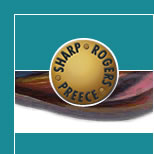 |
Chapter
Introduction |
Web Resources | Assignment
Comments | Teaching Materials
Below is additional material associated with the topics covered in chapter 5

Designing expressive interfaces
An interesting article by Aaron Marcus and Eugene Chen on designing affective personalities for 'baby face' devices (wireless devices with small displays) can be found in interactions magazine, Vol IX.1, entitled 'Designing the PDA of the Future'. One of their ideas is a device called Mob-i, designed to have an engaging and expressive personality. A set of icons that represent different moods and states (e.g. thinking, excited, alert) appears at the top of the PDA screen and changes according to what it is doing. Mob-i's personality is supposed to make users more attached to their PDAs and if they get fed up with the one they currently have they can always download another!

User frustration
A slide show on user frustration by Ben Shneiderman and colleagues can be found at http://www.cs.umd.edu/hcil/pubs/presentations/enuf%5B1%5D.ppt

Anthropomorphism
Brenda Laurel has written a paper called 'In Defense of Anthropomorphism' which was first delivered at ACM SICGHI'92 as part of a panel between Susan Brennan, Ben Shneiderman and herself.
If you are interested in some of the provocative ideas behind Reeves and Nass's approach to interaction design, start by looking at a one-day course they and their colleagues put together on "Experiments in Voice User Interfaces".

Emotion and interaction design
This is an emerging area and several workshops have been run on the topic. Robert Reitmann has written an article on Norman’s model of emotion and shown how it can be applied in interaction design.
See http://www.uxmatters.com/MT/archives/000019.php
Dan Saffer has also written an article on the elements of interaction design that covers emotional aspects. See: http://www.uxmatters.com/MT/archives/000096.php
|
  
|
